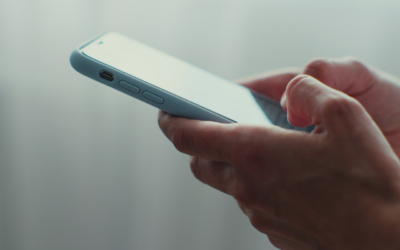In the dynamic world of digital interface design, understanding user behavior is essential for crafting intuitive and effective user experiences. Significantly, a crucial psychological principle in UX Design is Hick’s Law. As a core concept in cognitive psychology, Hick’s Law profoundly influences our interactions with digital devices, especially in terms of swiping, a gesture deeply ingrained in our daily digital routines.
Understanding Hick’s Law
Initially, before exploring the connection between Hick’s Law and swiping, it’s important to unpack what Hick’s Law entails. Formulated by British and American psychologists William Edmund Hick and Ray Hyman, the law asserts that the time required to make a decision is directly proportional to the number of choices available. Put simply, more options lead to longer decision times.
The time it takes to make a decision increases with the number and complexity of choices.
Source: https://lawsofux.com/hicks-law/
Hick’s Law in Digital Interfaces
Within digital interfaces, Hick’s Law is instrumental in guiding designers in structuring content and navigation paths. It implies that interfaces cluttered with numerous options or complex navigation can overwhelm users, potentially leading to decision paralysis or frustration. Consequently, the goal is to balance simplicity and functionality, ensuring users can easily find what they need without feeling overloaded.

The Role of Swiping
Subsequently, enter swiping – a gesture that has revolutionized our interaction with devices. Swiping has become an integral part of our digital experiences, from dating apps to newsfeeds and image galleries. But how does this relate to Hick’s Law?

Swiping interfaces embody Hick’s Law in many ways, simplifying the decision-making process. Take a dating app, for example: swiping left or right narrows the decision to a straightforward binary choice, thereby streamlining the user experience. This simplicity is precisely why swiping feels so intuitive and efficient.
Reducing Cognitive Load
Furthermore, swiping, a swift and intuitive action in digital interfaces, aligns with Hick’s Law in UX Design by reducing cognitive load. This approach effectively narrows down the choice array, making content navigation a fluid, flick-of-a-finger task.

Moreover, swiping interfaces, with their user-friendly navigation, significantly diminish the time and effort required to process choices in our information-heavy era. This reduction in cognitive strain aids in streamlining decisions and elevating user satisfaction. The resulting ease and rapidity of interaction are believed to trigger dopamine release, thus heightening pleasure and fostering continuous engagement with the app or platform.
Importance of Hick’s Law in UX Design
The challenge for designers lies in balancing simplicity with user engagement. Swiping interfaces must avoid being overly simplistic to prevent monotony. The objective is to offer sufficient variety and depth to maintain user interest without causing the decision paralysis Hick’s Law cautions against.

In conclusion, the interplay between Hick’s Law and swiping underscores the significance of applying psychological principles in design. By acknowledging the influence of decision-making processes on user behavior, designers can craft more intuitive and enjoyable digital experiences. As we delve further into the digital age, it’s intriguing to witness how enduring psychological concepts adapt to our everyday technology interactions.

If you found the insights on Hick’s Law and swiping interfaces intriguing, you might also be interested in exploring another crucial aspect of UX design: How Swiping Engages The Users




